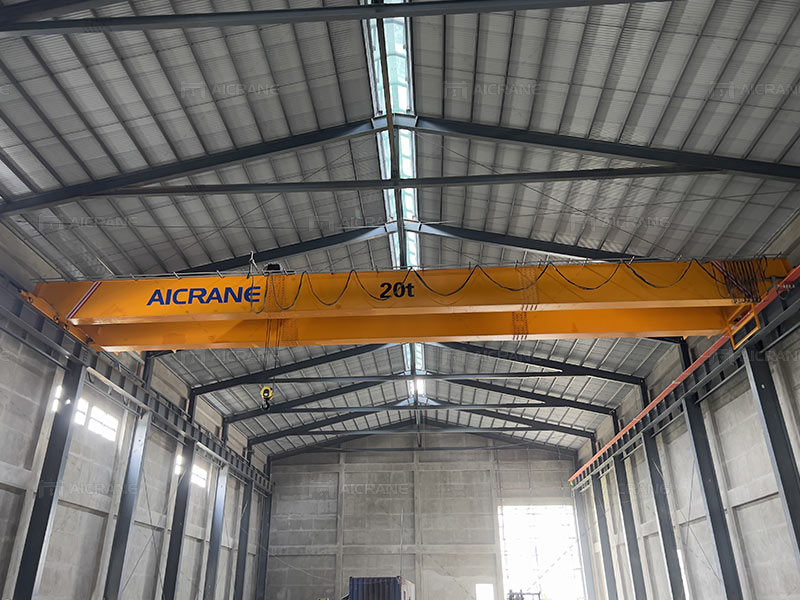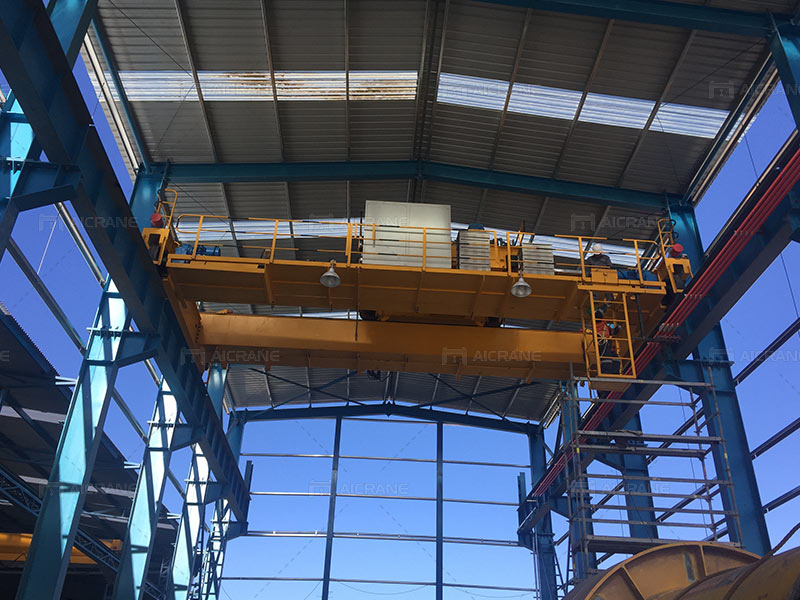When investing in industrial equipment such as an Electric Overhead Traveling (EOT) crane, the price often becomes a key factor in decision-making. It’s easy to assume that a higher price tag equates to superior quality, performance, and longevity, but is that always the case? This article will explore whether a more expensive EOT crane is genuinely better or if there are circumstances where a lower-cost crane could meet the same needs, without compromising on performance, safety, or reliability.

Understanding EOT Crane Pricing
EOT cranes come in a wide range of prices, depending on several factors such as load capacity, crane type (single girder or double girder), materials, technology integration, brand, and additional features. Typically, the higher the load capacity, the more complex the control system, and the more specialized the design, the higher the eot crane price. However, the relationship between price and performance is not always linear.
In many cases, an increase in price may reflect additional features or customization options that are not always necessary for every application. On the other hand, a lower-priced crane might lack some advanced features but could still be perfectly suitable for your operations if chosen wisely.
Key Factors That Influence EOT Crane Prices
Before we dive into whether a higher-priced crane is always better, it’s important to understand the main factors that drive up the cost of EOT cranes:
- Load Capacity: Larger cranes designed to lift heavy loads come with a higher price due to the use of stronger materials and more robust mechanical components.
- Span and Height: Cranes with longer spans or higher lifting heights require more materials and engineering precision, increasing their price.
- Technology Integration: Advanced features such as automation, anti-sway systems, and IoT-enabled monitoring systems can significantly raise the price of an EOT crane.
- Material Quality: High-quality materials, such as reinforced steel, corrosion-resistant finishes, and heavy-duty components, naturally come at a premium.
- Customization: Tailored solutions for specific industries or unique project requirements can drive up the price due to engineering, design, and manufacturing complexities.
- Brand Reputation: Well-known brands that have a long-standing reputation for reliability, service, and safety certifications may charge more for their products.
- Service and Warranty: A crane that comes with extended warranties, comprehensive after-sales service, and technical support will typically cost more upfront, but may save money in the long run by reducing downtime and maintenance costs. Click here https://aicraneliftingsolution.com/overhead-cranes/overhead-crane-price/ to learn more about overhead crane price.

Does Higher Price Mean Better Quality?
In many industries, a higher price often indicates better quality or more advanced features, and EOT cranes are no exception to this rule—up to a point. The costliest cranes on the market are often built for highly specific, demanding environments such as steel mills, power plants, or shipyards. These cranes are designed to handle extreme conditions, heavy-duty workloads, and extended use, so their high price may be justified in those contexts.
However, not every business or project requires the highest-grade materials or the most advanced technology. For some industries, a moderately priced crane with standard materials and basic technology will work just as effectively and safely.
For instance, a small manufacturing plant that handles light-to-medium loads may not need the same level of sophistication as a power plant or a shipyard. Investing in a high-end, expensive EOT crane could be overkill for such operations. Instead, a mid-range crane with a solid warranty and good service coverage might be more than sufficient.
When Is a Higher-Priced EOT Crane Worth It?
There are certain scenarios where a more expensive crane may indeed be worth the investment:
- Heavy-Duty Operations: If your facility handles large, heavy loads that require frequent lifting and long operational hours, a higher-priced crane with better durability and performance features can provide long-term benefits. These cranes often come with heavy-duty motors, high-strength steel, and enhanced safety features that ensure smooth operations and reduce the risk of downtime.
- Precision and Control: Some industries, such as aerospace or precision manufacturing, require cranes that offer ultra-smooth movement and precise control. Higher-end cranes often come with advanced control systems that allow for more accuracy, which may be worth the extra investment in these industries.
- Harsh Environments: Operations in extreme conditions—such as high humidity, chemical exposure, or high temperatures—may require overhead cranes with specialized materials and corrosion-resistant finishes. These add to the crane’s cost but help extend its lifespan and reduce the need for frequent maintenance.
- Technology-Driven Efficiency: If your operation prioritizes efficiency, investing in advanced technologies like automation, smart controls, and condition monitoring can provide significant returns on investment. Although these features add to the crane’s price, they can optimize productivity, reduce operational costs, and enhance safety.
When Can You Opt for a Lower-Priced EOT Crane?
In contrast, there are many scenarios where a high-end, expensive crane may not be necessary:
- Light-Duty Operations: If your operations involve lifting lighter loads or only occasional use, a lower-priced crane will likely meet your needs without any issues. Aicrane single girder cranes, for example, are often more affordable and are ideal for light to moderate lifting tasks.
- Limited Budget: For businesses with tight budgets, purchasing a crane that meets essential requirements without unnecessary add-ons can be more cost-effective. In these cases, choosing a crane based on what you need—rather than paying for extra features you won’t use—can save considerable money.
- Smaller Operations: Small and mid-sized businesses may not require all the advanced features of high-end cranes. A basic, lower-cost EOT crane could still provide reliable performance without straining the company’s finances.
- Used or Refurbished Cranes: If you’re willing to consider pre-owned options, you can often find refurbished or lightly used EOT cranes at a fraction of the cost of a new one. Many of these cranes are still in excellent condition and can provide reliable service for many years.
Conclusion: Choose Based on Needs, Not Price
Ultimately, the decision of whether a higher-priced EOT crane is better depends on your specific operational needs. While premium cranes offer advanced features, superior materials, and enhanced durability, not all applications require these extra costs. It’s crucial to carefully assess your lifting requirements, operational environment, and budget constraints before deciding.
For many businesses, a moderately priced or even lower-cost crane can deliver the same performance, safety, and reliability as a more expensive option, provided that it is well-chosen. The key is to focus on getting the best value for your investment, ensuring that the crane meets your specific needs without overspending on unnecessary features.
